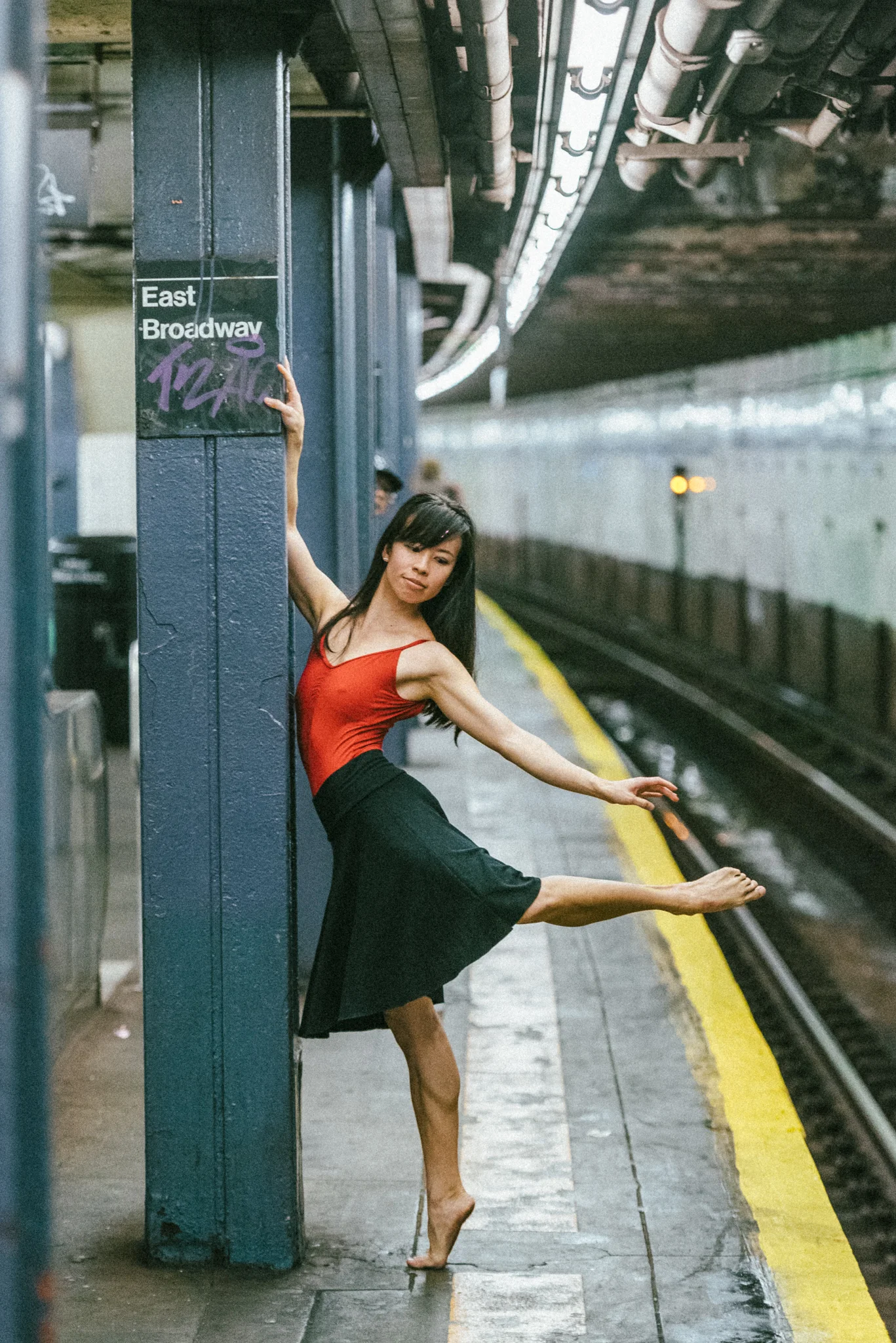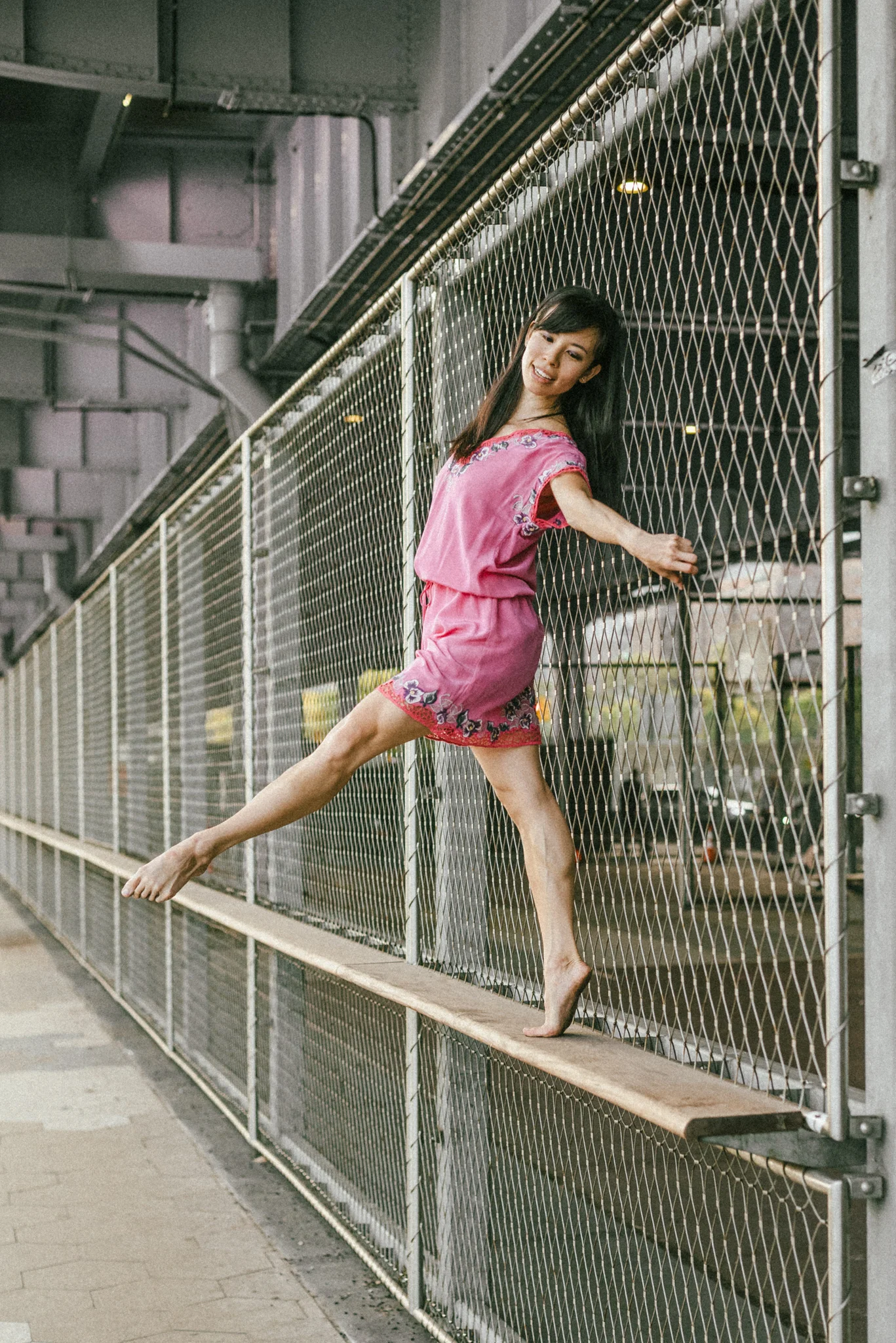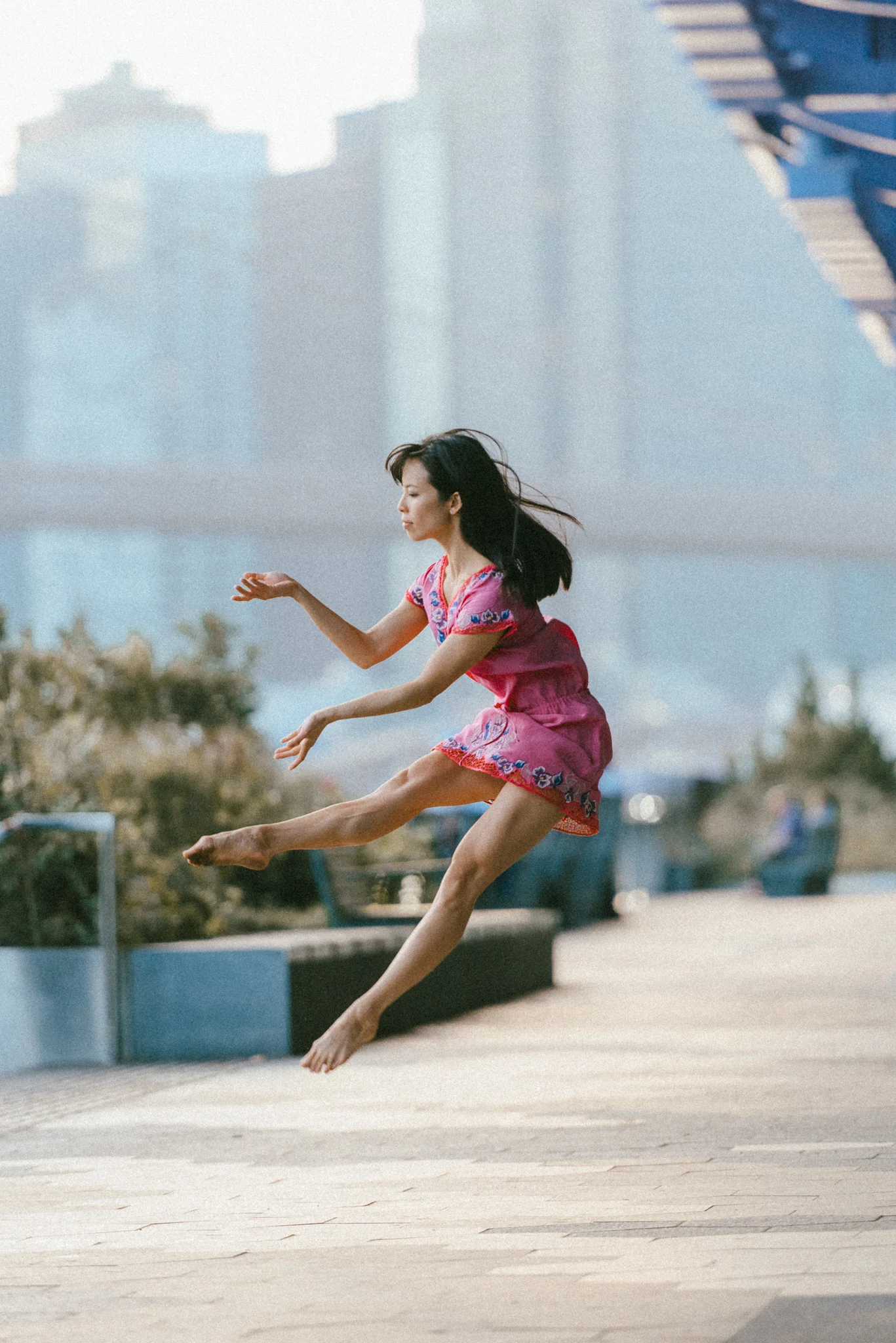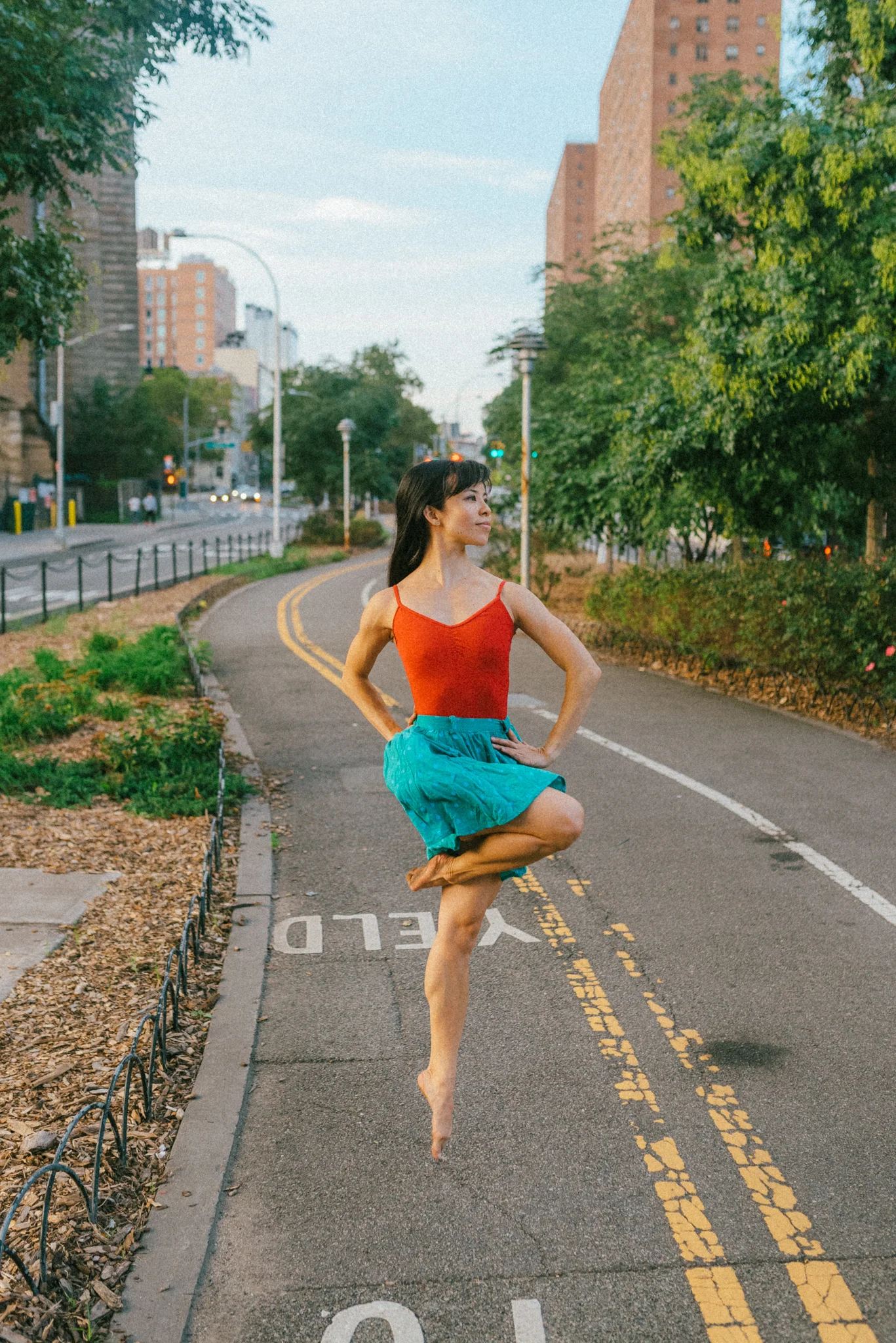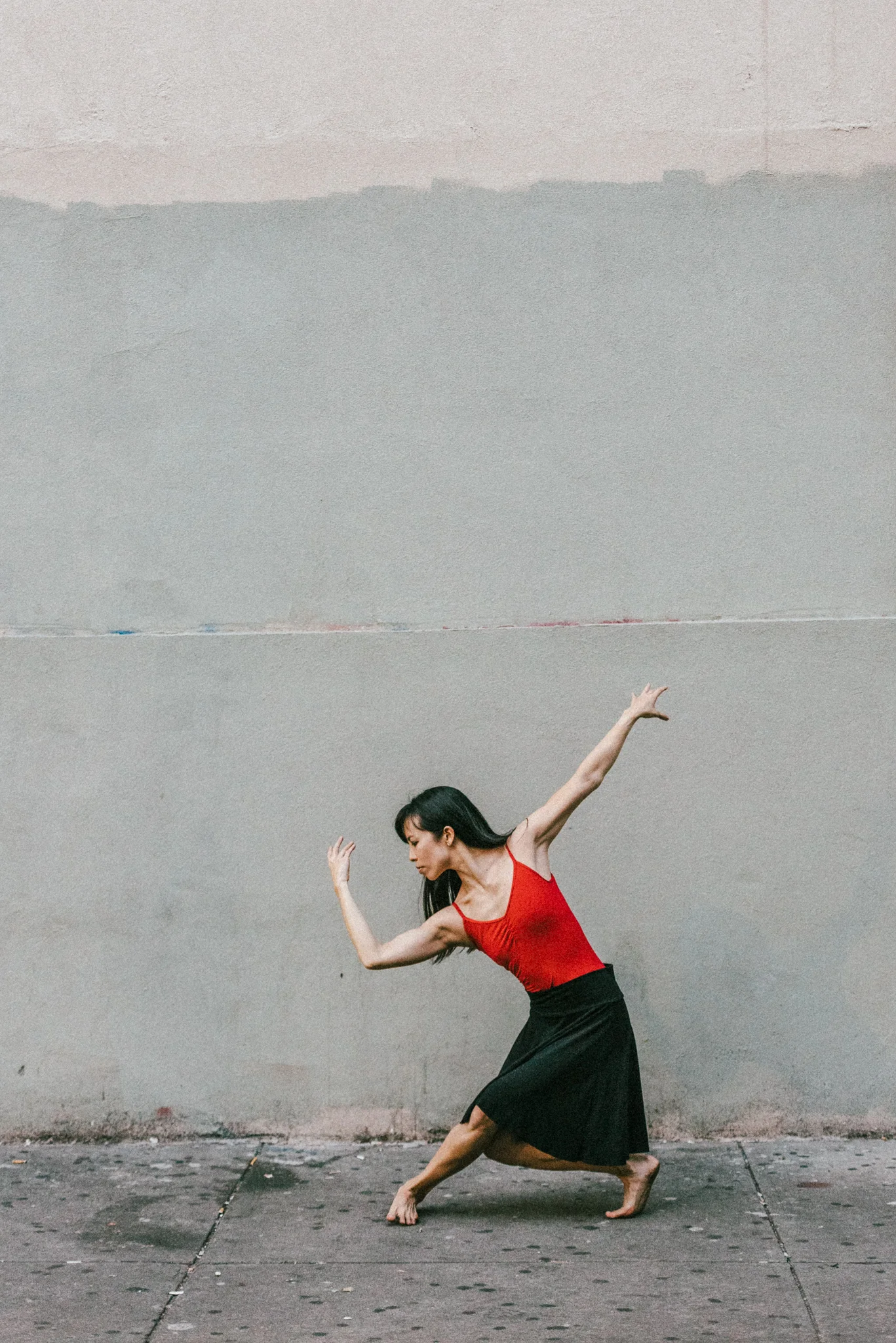How did you start dancing?
I started dancing when I was a little kid. I was one of those kids that would dance at home. My mom took me to a dress rehearsal of a dance recital where I fell in love with a solo done to Amazing Grace. She had videotaped the dress rehearsal and I’d just watch it over and over on repeat. I would have my own dance recitals until my parents were like, “How about we put you in class so you can have one dance recital a year as opposed to all the time in the living room?”
So I started out with ballet and tap. I was about four. I was in a class where I was the smallest kid. I loved it. I loved ballet. I was less interested in tap. By middle school, I was pretty much doing ballet only. I had moved to a studio called Fort Bend Academy of Dance with a pre-professional company, BalletForte. The director was amazing. He really believed in doing full-length ballets. All of the students would be dancing in the full-length ballets instead of hiring guest artists. We got a lot of opportunities and exposure through that. When I was younger, I wished I had gone to a ballet academy, but looking back it was amazing to be able to have those opportunities.
I did not think about modern. I was actually really scared about modern. I just didn’t know anything about modern dance. At that time, there weren’t that many classes available in Sugar Land, TX. I did not ever imagine I’d be dancing in a professional modern company growing up.
What was it like going through high school?
Dance was something that I really, really loved. It was something that was very much my identity. Academics were definitely a focus as well for me. My mom comes from a very artistic family where her father is a self-taught calligrapher and musician. My mom was a piano teacher and loved dance as an art form. So she was really happy to see that I loved dance as well.
Growing up, it was a lot of balancing between academics and dance. In some ways it made me more disciplined. In order to do both things, I just had to work harder. Because I was so into ballet, I kind of knew that at the end of high school that I wouldn’t ever make it in a ballet company just because of the way ballet companies are. A lot of people go into a professional company right after high school, and I knew that wouldn’t be possible for me. But I knew I wanted to continue dancing. I had applied to a bunch of schools knowing that I wanted to major in some science field and to continue dancing.
At the Harvard pre-orientation weekend, the Harvard Ballet Company had their performance during the time-period—knowing that all these new potential freshmen would come. I went to see one of the performances and was amazed—I could not have imagined dance at such a high level at a school where dance is not a major. For me, I was sold. This was a place where I could do both. I think I was driven by the fact that I didn’t want to close doors. I wanted to be able to keep doing both.
It was in college—because of an injury where I couldn’t really dance on pointe anymore, and my friend who was choreographing a dance asked me if I’d be interested in being in his piece. That was my first exposure to modern dance. Then, a professor at Boston Conservatory, also alumni of José Limón Dance company, came to set a work by José Limón, and that was my first formalized exposure to modern dance. College was when I discovered a whole other field I had no idea about. In some ways, I was forced into it because I wanted to keep dancing but I couldn’t dance on pointe anymore.
I was a chemical and physical biology major as an undergrad. I have always loved science, and knowing that dance has an endpoint and that performance careers are not everlasting—I feel like there are amazing people who continue dancing into their later years but that’s definitely the exception and not the norm. I don’t think I am that talented to be able to do that [laughs]. I knew I wanted to do something after dancing, and medicine was something that really captivated me. In some ways, I think it was very much informed by dance in terms of my interest in the human body and how everything is connected. Once I found out that there is a niche field called dance medicine, which is rapidly growing, I felt like there was this special place for me in medicine that is just perfect in terms of combining science, medicine, and dance. I knew medicine is a long commitment of schooling and training. I knew that there would be a time where I’d have to make that decision to transition from dance.
How did you get involved with Paul Taylor Dance Company?
One of the things that a lot of my friends in dance did while growing up was go to dance intensives. I was never allowed to go to them. I was so sad and jealous about not being able to go, and I wanted to go to one. I didn’t think it was possible because a lot of programs are geared towards students in middle school and high school. But there are also modern dance intensives and I wanted to make up for the fact that I didn’t get to go when I was younger. Now I could make my own decisions about what I wanted to do in the summer, I was going to do a dance intensive.
There was a new arts scholarship available for students, and you had to propose a project and apply, so I thought I should do more than just one intensive if I was going to put all the work into getting this grant. I did some research and looked into different companies. I was interested in David Parsons work because I had seen it before and liked how athletic it was. And I found out that he was an alumni of Paul Taylor Dance Company, so I started watching some works by Paul Taylor. I did the Paul Taylor intensive as well as the David Parsons intensive, and that was my first exposure to his style. It felt awesome. In some ways, as a smaller person, I always saw my size as a hindrance for ballet. Seeing that Paul Taylor Dance Company had other people who were smaller in stature and that the work was all about moving through space, I didn’t have to be my size—I could dance bigger than who I am. That captured me, and I loved my experience at the intensive. In my senior year, Taylor 2 came and did a performance at Harvard, and Ruth Andrien, who is an alumni of Paul Taylor, now the rehearsal director of Taylor 2, came to teach a semester of work. This was prior to a dance major, but there was movement towards trying to create a curriculum, so it was one of the early for credit classes in dance. I took the class and was in the Paul Taylor piece she set, Aureole. That just reaffirmed how much I loved the style.
Luck would have it, there was an audition for the company right before my senior graduation, and I was at the right place at the right time. It worked out and that’s when I got into Taylor 2.
I think when I made the decision to leave Taylor 2 and start med school, I thought I was done dancing, and it also felt like if I wanted to go down this 8-10 year training journey, I should get started at some point sooner than later. It was a hard decision to make because I remember even as I was interviewing—maybe ambivalence is not quite the right word, but I was definitely questioning if I was doing the right thing. Actually at one of my interviews, the interviewer asked how I felt about making this change and about how no one is going to be applauding me for a very long time if ever. I told him that I was ready for a change, but in reality, I wasn’t sure 100%.
In med school, I danced my first year with the Harvard Dance Program and Urbanity Underground, but then by second and third year it was just not possible. During the third year of medical school, I was looking at the Lincoln Center season schedule for Paul Taylor because I wanted to bring my boyfriend to show him this whole other life that I had. That’s when I saw the audition for the main company. I hadn’t been looking for an audition, but when I saw that, immediately and instinctively, I was like, “I have to go.” It was not rational and not likely that I’d make the company, but I had to go. I feel like Paul had this keen sense of knowing that it was my last audition—this is not the first time I’ve heard someone say that about him. For me, that audition felt very different than previous ones because it was more freeing. As much as I wanted it, I wasn’t constrained by all the mind games that come into play.
I was in my third year of med school at that point. Once I started with the main company, I took a leave of absence from school. I had one year left. I was so close from finishing school. Fourth year of medical school is a little more flexible because they’re electives. Any time I had off, I’d go back to Boston and also do away rotations in New York City. I used any time that was available. There were definitely people who believed in what I was doing and really supported me in the process and allowed me to have this atypical schedule. I graduated last May and going to keep on dancing holding off my residency for the time being.
What are your plans?
I very much believe that there’s a way to be able to combine medicine and dance. This intersection of arts and medicine is a place that things can happen. I am not sure if I have the right answers to that at the moment, but I know that dance medicine exists. I feel like what I am doing right now draws on both my dance experience and medicine background. That is something I want to continue doing. Figuring out something that makes it possible.
How long do you see yourself dancing?
It’s hard to say. I don’t feel like I have a timeline. In some ways, I feel like because my path has been less direct and have been given opportunities I could not have imagined, I should continue on this path for awhile. I want to be open to those opportunities and possibilities whatever they mean. I feel like at the moment I am very happy with where I am with dance.
Who was Paul Taylor to you?
This period has been a very interesting time. With his passing, there is great sadness but with it a sense of profound gratefulness. This is someone who has changed the lives of so many people. He profoundly changed the course of my life. I think many people can say that for their own lives. Not just for dancers but also other artists in the field. He is someone who has moved people in all different ways. Reading all these articles about him you see that as well. Even people who I didn’t realize were as connected to the arts have reached out in their condolences. It’s interesting because I know him as an individual. I see him as my boss, a creator of these beautiful works that we still are able to continue to do and he lives on in his works. In some ways, he isn’t gone. He’s also this icon. He is one of the last great choreographers of this era that really shaped, changed, and created modern dance. So it’s interesting to see him in all these different levels and how that ripple-effects to the world.
When we found out about his passing, we were off at the time. For us, it’s not that often, so it very much amplified the fact that he brought together this family. We tour together, work together, travel together, live together. We fight like a family [laughs]. He very much brought together this family that was special to him. One of the articles—I want to say Gia wrote—she commented on it saying he doesn’t have any immediate family, and this dance company is family. [The article was written by Gia Kourlas, and she put it more eloquently: “In the many obituaries for Mr. Taylor, there is a line that keeps leaping out at me: He left no immediate survivors. That’s not true. He had more survivors than you could count on 15 hands. His dancers, more than 150 and counting — the company just held auditions — are his survivors.”]
I do think that is very true. He has this keenness about people. As someone who loved observing people and was so aware, I think he brought people together that he thought would be a part of this family. In some ways our day to day hasn’t changed. He knew what he wanted. He said as long as people wanted to see his work, it should be able to be done. He has created this continuity with Paul Taylor American Modern Dance and named a successor, Michael Novak. We knew where he wanted us to go and to be a part of that journey is pretty amazing.
What would be your advice to dancers who want to pursue another path at the same time?
For me, it was this passion for both that really drove me to do these things. In some ways, I was not willing for no to be the answer. I was also really lucky too that I found people who advocated on my behalf to make this possible. As much as I wanted to be able to do this, I very much relied on the powers that be and people who were of greater significance than I to be able to help me make this possible. And that wasn’t my doing. These people believed in me and were willing to take a risk on me. So maybe finding those people in your life who are willing to believe in your cause. You just can’t do it alone. I feel like there are so many entrepreneurial individuals who do their own things, seeing them create their own ways was very inspiring to me.
If you could go back in time and tell little Madelyn anything, what would you like to tell her?
I would like to tell her that her habit of flaring your ribs while you’re dancing is going to come and bite you in the butt. There is definitely video evidence of me doing it and I was like, “Oh my gosh I still have those bad habits. This is where they came from.” I would also encourage her to keep finding those joyful moments. Keep creating them and finding them. It’s the joy and freedom—and sometimes as artists you’re working so hard to get better at stuff that joy is lost. For me, sometimes I catch myself doing that, where I’m trying so hard for perfection, which I feel has been so ingrained, sometimes at the expense of artistry—it’s interesting. One of my mottos that I’ve come to during our last China tour was “Care less.” Not to not care, but just to care less and find that joy.
Any last thing you want to share with the world?
I guess for me, I love hearing people’s stories. I love hearing people’s journeys. I think people should find ways to share their journeys because you never know who may hear it and what that may mean to someone else.
